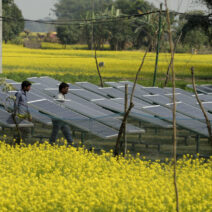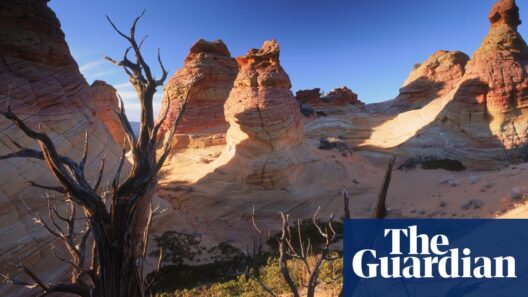The temperate forest climate epitomizes a dynamic blend of warmth and precipitation, providing a haven for diverse flora and fauna. These forests are primarily situated between the polar regions and the tropics, benefiting from a temperate climate characterized by distinct seasonal variations. This unique climate not only shapes the ecosystem but also influences the interrelationships among species. Through an analysis of the temperate forest climate, one gains insight into the intricate ballet of life that unfolds throughout the seasons, fostering a deeper understanding of these vital ecosystems.
To comprehend the temperate forest climate, it is essential to recognize the ecological zones it encompasses. Typically, these forests can be found in regions like Eastern North America, Eastern Asia, and parts of Europe, manifesting their distinctiveness through various tree species, such as oaks, maples, and beeches. The climate here radiates a humid continental or maritime atmosphere, heavily reliant on geographical positioning. Thus, latitude and altitude play crucial roles in determining local weather patterns, creating the quintessential diversity for flora and fauna.
The temperate forest climate endures four well-defined seasons: spring, summer, autumn, and winter. Each season is marked by significant changes in temperature, precipitation, and ecological activity, affecting the growth and life cycles of trees, plants, and animals alike.
Spring emerges as a season of revitalization. As the snow melts, the landscape awakens with new life. Average temperatures begin to rise, typically fluctuating between 45°F and 65°F (7°C to 18°C). The warmth of spring catalyzes budding trees, and flowering plants unveil their vibrant colors, sparking enthusiasm in the realm of biodiversity. Many temperate forest species, such as the red fox and various birds, engage in courtship and breeding during this time. They capitalize on the abundance of resources that come with the season, crafting a narrative of survival and propagation.
Summer is characterized by a surge in growth, epitomizing the peak of biological productivity. The average temperatures can soar to 70°F to 85°F (21°C to 29°C), ensuring ample sunlight penetrates through the leafy canopy. In this densely shaded habitat, various plants engage in photosynthesis, converting sunlight into energy, thus supporting herbivores and, subsequently, the predators that depend on them. The canopy teems with life, as insects buzz fervently, songbirds dive between branches, and mammals scurry to gather nourishment. The symbiotic relationships fostered during this season are critical for sustainable ecosystems.
As summer gives way to autumn, the temperate forest undergoes a dramatic transformation. The air turns crisp, and temperatures begin to dwindle, often ranging from 50°F to 70°F (10°C to 21°C). The chlorophyll fades from leaves, revealing striking hues of red, orange, and yellow. This seasonal spectacle entices human observers and animals alike. Furthermore, autumn signals a crucial stage for wildlife as animals prepare for winter. Squirrels amass reserves of nuts and seeds, while migratory birds initiate their journeys to warmer climates. This preparatory phase highlights the inherent resilience and adaptability of species inhabiting temperate forests.
Winter descends, casting a tranquil blanket over the forest. With temperatures plummeting between 20°F and 40°F (-6°C to 4°C), the environment enters a state of dormancy. The absence of foliage unveils the intricate structure of the forest, revealing the intertwined relationships among the remaining inhabitants. Those that remain, such as deer and various rodents, shift their foraging strategies, adapting to the scarcity of resources. The stark beauty of winter, though seemingly desolate, encapsulates a period of rest and regeneration. It serves as a reminder that every cycle necessitates a time of reflection and recuperation.
Amidst the transitions between these seasons, the temperate forest climate thrives on the interplay of multiple ecological factors. Precipitation levels, typically ranging from 30 to 60 inches (760 to 1,500 mm) annually, are distributed throughout the year. This consistency aids in sustaining a rich soil profile, vital for nurturing plant growth and supporting soil-dwelling organisms. Moreover, the varying climatic conditions influence biodiversity at all levels, from microflora to apex predators.
In understanding the temperate forest climate, one can appreciate the delicate balance maintained within these ecosystems. Not only do they contribute significantly to global biodiversity, but they also play a pivotal role in regulating the Earth’s climate. Trees sequester carbon dioxide, filtering the air and moderating temperatures. Additionally, these forests function as crucial watersheds, influencing local hydrology and promoting soil fertility.
As global climate change continues to pose threats to these ecological sanctuaries, the importance of advocating for their preservation has never been more critical. Deforestation, pollution, and urbanization threaten to disrupt the intricate relationships fostered in temperate forests. By pledging to protect and restore these vital ecosystems, society can contribute to maintaining biodiversity, mitigating the impacts of climate change, and ensuring the vitality of the planet for future generations.
In conclusion, the temperate forest climate is a testament to the resilience of nature; it embodies the cyclical rhythms of life and the interconnectedness of organisms within it. From the spring bloom to the winter calm, every season reveals the profound intricacies of these forests, inviting curiosity and inspiring stewardship. Recognizing the significance of temperate forests encourages society to reshuffle its perspective, approaching environmental conservation with a sense of urgency and purpose. Only through collective awareness and action can we endeavor to protect these remarkable ecosystems and the myriad life forms they harbor.








